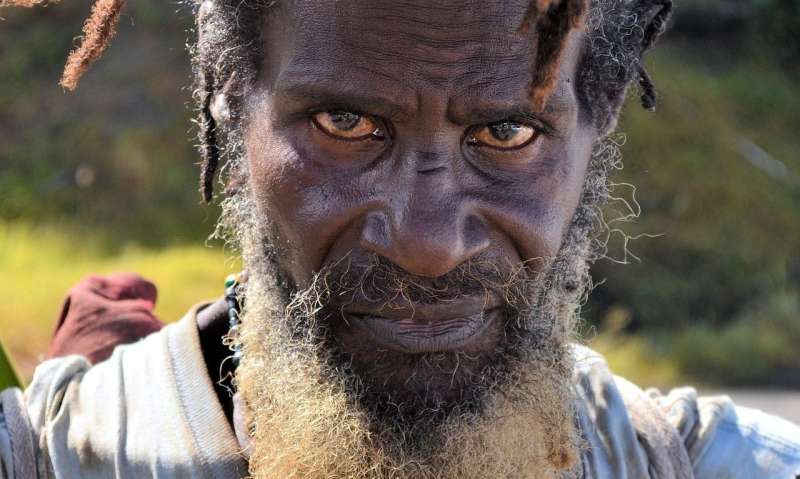Indigenous Australians are crucial to hitting our 2035 climate targets. That transition has to be fairer

Lisa Lock
scientific editor

Andrew Zinin
lead editor

"If we act now and move with common purpose, then we can do more than just guard against the very worst. We can protect our environment and build a stronger and fairer economy for the next generation."
That's what Prime Minister Anthony Albanese told a special climate summit at the United Nations in New York on Wednesday, as he shared Australia's with other world leaders.
And the prime minister is right: climate change isn't just a threat. It's also an opportunity to do things differently—and more fairly.
As our research shows, First Nations people and Indigenous-managed land will play a crucial part if we want to hit our 2035 targets. But energy justice and sovereignty need to be central in our climate policy.
Two key challenges stand out: reducing energy stress, which we found is a significantly bigger problem for Indigenous households today, and ensuring self-determination in renewable energy or critical mineral developments on Indigenous land.
Higher rates of energy stress
For too many Australians right now, power bills are rising, their homes are too hot or too cold, and decisions about big energy projects can be made without local voices being heard.
That's certainly true for many Indigenous households and communities, right across Australia. For those in remote communities, they can face , , and reliance on expensive .
—where you pay for power in advance and the meter cuts off when the credit runs out—are common in remote communities and drive up disconnections, leaving households especially vulnerable during extreme weather.
But energy stress isn't confined to remote communities. For the of Indigenous Australians living in urban and regional areas, energy stress often goes unnoticed.
Our recent , using two decades of survey data and recent data shows Indigenous households consistently struggle to consume the energy they need.
In 2023, more than 70% of Indigenous households reported energy stress—15 points higher than non-Indigenous households.
Recovering from energy stress is hard. Our research shows that Indigenous households that had previously fallen behind on bill payments were percentage points more likely to struggle again.
Having a rainy day fund of around A$4,000 can prevent a household falling behind. But Indigenous households often lack these reserves.
What's the solution?
Unless we close the gap in energy stress, First Nations people will stay more exposed to the worst . Looking overseas offers possible policy solutions.
In Europe, for example, seasonal can prevent energy loss during crises. further protect vulnerable families.
goes even further for Indigenous households, offering targeted bill support, home upgrades and .
Canada also has a range of renewable energy and efficiency programs aimed at for heating and electricity.
Indigenous landholder sovereignty
But Indigenous Australians are not just energy consumers—they are landholders. And land matters.
Meeting Australia's net zero targets won't just happen anywhere. According to by , almost half (43%) of new renewable energy infrastructure—from wind and solar to transmission and storage—will need to be built on recognized First Nations land to get to net zero emissions by 2060.
Almost of critical energy minerals projects already sit on land where Indigenous peoples have a right to negotiate. With pending native title claims, that could jump to nearly 80%.
Indigenous peoples hold the keys to Australia's net zero transition—so should .
Fairer negotiations
In 2024, the federal government launched the , committing A$70 million to support Indigenous-led renewable initiatives. Its goals were: autonomy, self-determination, and meaningful participation.
Policy ambitions alone don't guarantee results. Recent laws introduced in South Australia illustrate how legislation can clash with these aims.
South Australia's introduced two major changes regarding negotiations over renewable projects.
First, it lets the government choose a single energy company to negotiate an agreement with native title holders.
Imagine a house auction where just one buyer was allowed to bid—would the homeowner ever get the best offer?
And second, if negotiations fail, the government can force a sale through compulsory acquisition. In our previous analogy, it's as if the homeowner dislikes the bid but is forced to sell anyway, with the price set later by a judge.
And while intended to fast-track renewables, shows both measures undermine Indigenous consent, bargaining power, compensation amounts and energy sovereignty.
Leveling the playing field
Even without these rules, the field is uneven. Developers bring a whole team of lawyers, valuers, and experts to the negotiations. Indigenous communities often face the game alone.
Though this Act applies in South Australia, similar exist, so the risks are national.
Economic suggests four changes to improve fairness:
- let multiple renewable energy companies compete for agreements
- use compulsory acquisition only as a last resort, after competitive bidding and
- make all price offers, compensation methods, and impact assessments transparent through a state-managed register
- fund Indigenous access to expert negotiators and lawyers.
Indigenous households and landholders must not just survive this energy shift—they must lead it, benefit from it and thrive.
Provided by The Conversation
This article is republished from under a Creative Commons license. Read the .![]()
















